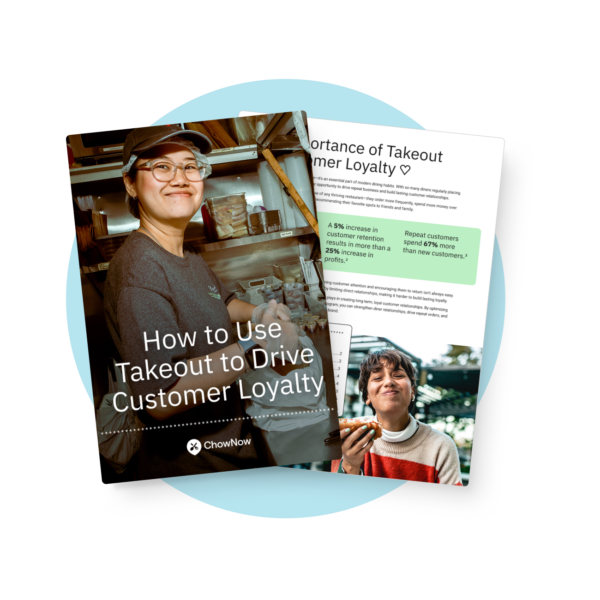4 Ways to Rebuild Customer Loyalty at Your Restaurant

As a restaurant, nothing hurts your business quite like an unhappy customer. Not only is the success of your restaurant centered around the customer experience, they actually hold the power to make or break your bottom line. Websites such as Yelp and Amazon provide disgruntled patrons with a hyper-public platform to rant about your business. And given that 84% of people trust online reviews as much as a personal recommendation, going above and beyond to rebuild trust after a bad experience can be the difference between a lifelong customer and a bad restaurant reputation.
Check out these strategies for turning your upset customers into your most loyal brand advocates.
4 Ways to Rebuild Customer Loyalty at Your Restaurant
1. Be solution-oriented.
Ever heard of the saying “the customer is always right?” While that may not be true in every situation (you need to protect your staff, too!), getting into a finger-pointing match is never a good idea.
Train your staff to maintain a solution-oriented approach, especially if the dispute is occurring in the restaurant in the presence of other customers. Keeping a calm, compassionate disposition is key, even if the customer is volatile. You never want to be perceived as defensive or rude. Here’s how to navigate in-store conversations:
- Acknowledge the customer’s concerns and apologize, even if it wasn’t your restaurant’s fault — acknowledging their feelings as valid doesn’t mean you are admitting wrongdoing. Sometimes, customers just want to feel like they are being heard.
- Graciously and empathetically discuss how you can make the situation better for the customer.
2. Keep your promises.
It’s important to set yourself up with the right tools for rectifying a bad customer experience. Always keep a shared list for all managers and supervisors with who needs compensating — the worst thing you can do is promise a disgruntled customer a comped meal down the line and then not have any record of the conversation.
A simple clipboard in the restaurant office works really well. You’ll want to include the date of the incident, name of the patron, incident description, what was promised or recommended, and the name of the manager who handled the situation. Setting yourself up with the right tools is step one in maintaining a stellar customer experience.
3. Go above and beyond.
Have you ever been pleasantly surprised by a business’s response to your complaint? It’s almost enough to make you forget what you were upset about in the first place! Most people have come to learn that the standard response to their complaint is some type of compensation, so it’s important to meet those expectations. A lifelong customer could be at stake.
If the issue was service related, don’t just compensate the meal they had. Make sure you offer them something the next time they come in (usually just an implied discount is great). Use comforting language that makes them feel taken care of, such as “Please ask for me and I’ll take care of you.” Again, make sure to rely on the tools you set up to guarantee you can follow through.
4. Take Their Online Complaints, Offline

This is a valuable tactic that many restaurants miss out on. Sometimes, a customer won’t express their discontent right away — instead, they do it as soon as they’re sitting behind the anonymity of their computer screen. Online platforms such as Yelp and FourSquare have become multi-billion dollar corporations because customers love to tell the world about their customer experience. Many restaurants feel that reviews are out of their control but smart businesses have started to monitor bad online reviews as a way to offer world-class customer service.
- Try to get them on the phone. When customers hear a compassionate person on the other end, they are far more likely to hear reason.
- Respond to bad reviews online by offering the customer a free meal or a complete refund.
- Monitor all reviews, including good ones, to ensure that your loyal and happy customers stay that way.
A happy customer is a loyal customer and loyal customers attract new customers. Since bad customer service news travels fast, it’s great to know that as a business owner you have the power to change the conversation.






